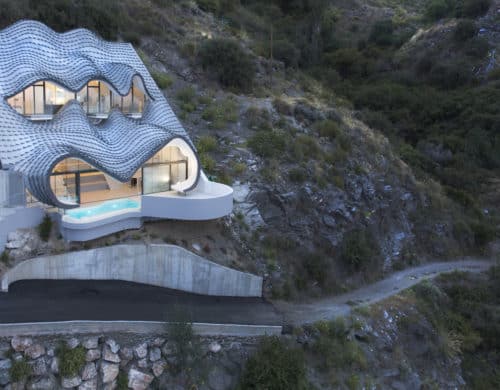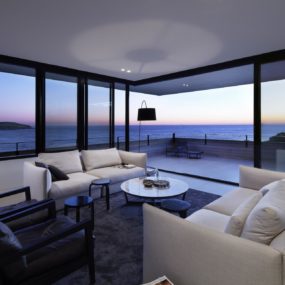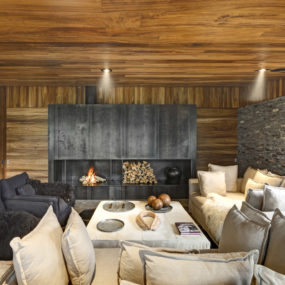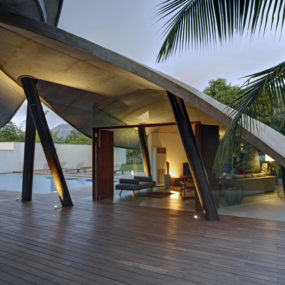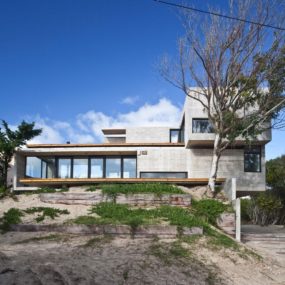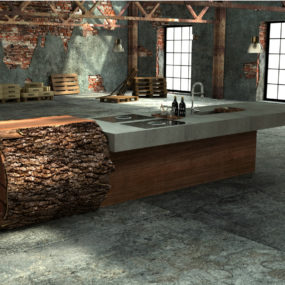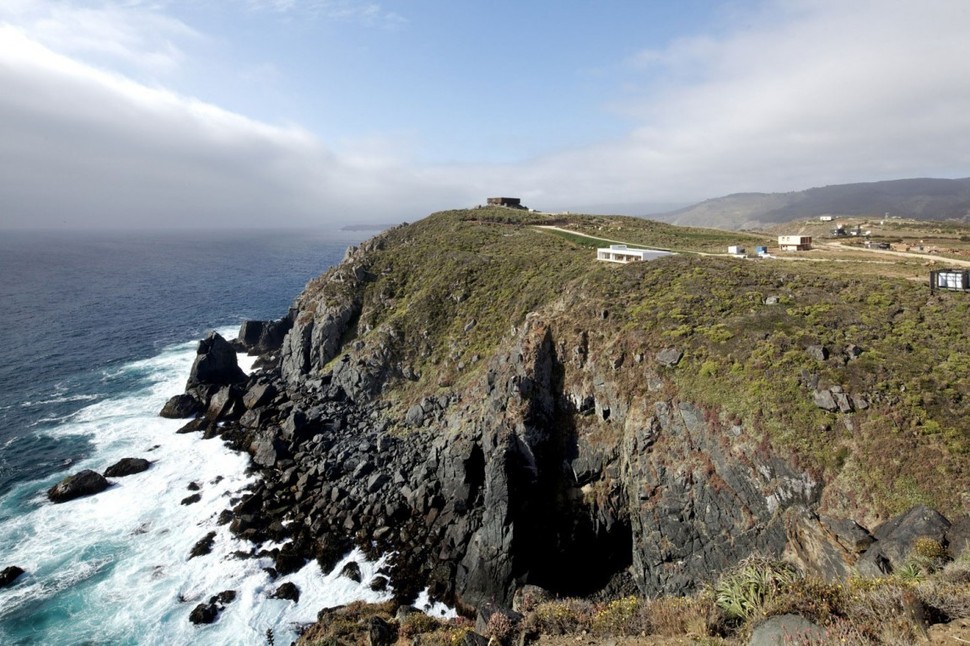
This holiday residence is located on a clifftop in the Valparaiso Region in Chile, overlooking the ocean. The setting is wild and spectacular, and architects Nicolas Lipthay Allen/ L2C respected this feature in their design. In the design phase two elements were of major influence: the site and the climate. The site because of its positioning and its abruptness, and the climate because of its strong south winds. The starting point was a dilemma, as the house had to be open in order to take advantage of the spectacular views, but it also needed the outdoor spaces to be sheltered from the wind. The solution the architects found to this problem was to place the patio at the back of the house and enclosed by high concrete walls. This solution offers both shelter and privacy/security to the residents, as the house seems surrounded by a protective shell. Though white and different from the dark rock of the cliff, the building is minimally invasive to the site. The house looks as if naturally laid there were the land was flat, and ready to be removed if nature called for it. The element that anchors the house to the site is concrete, the predominant structural material.
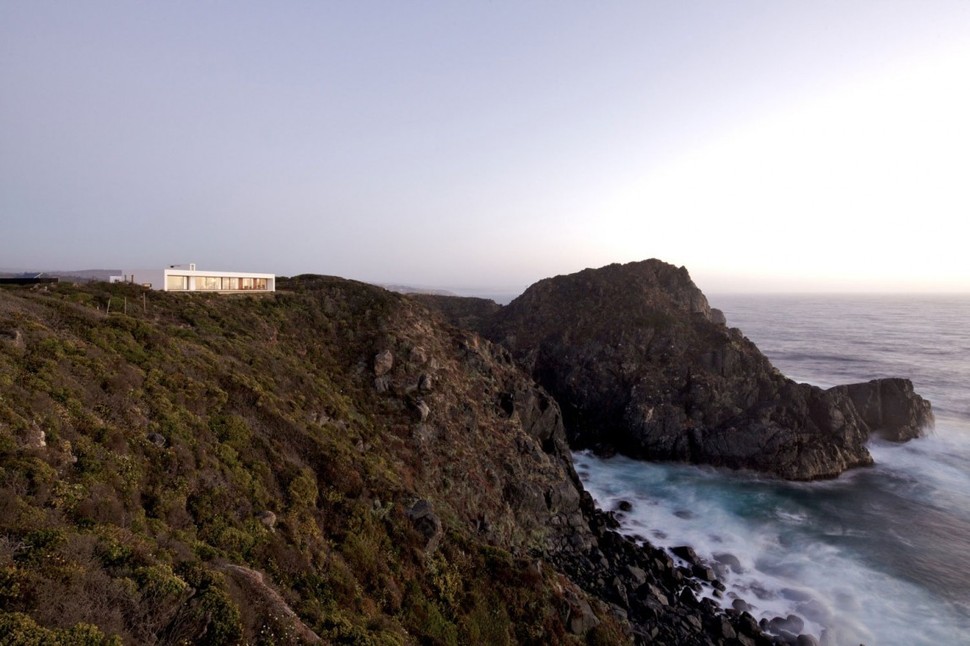
Perched atop the rocky cliff, the house seems a mere spectator in front of nature’s ever changing act. Though important to man, it becomes minor when compared to the greatness of nature.
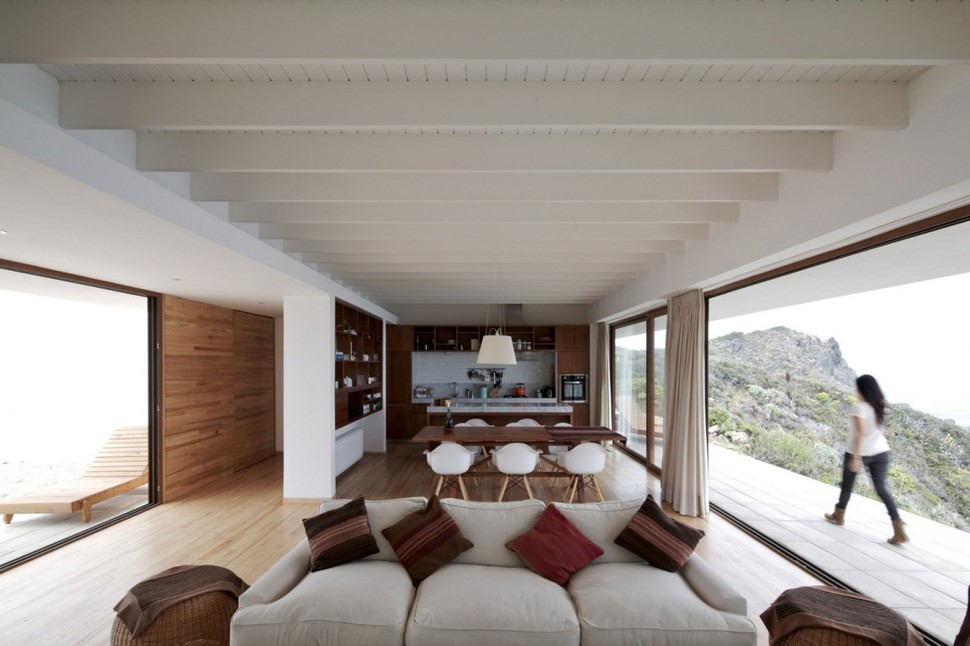
The open-plan living area is the center of the house. It is at the same time a meeting point and a transition point. It is a transition point thanks to its glazed front and back facades, which allow to enjoy the ocean view from the sheltered back yard.
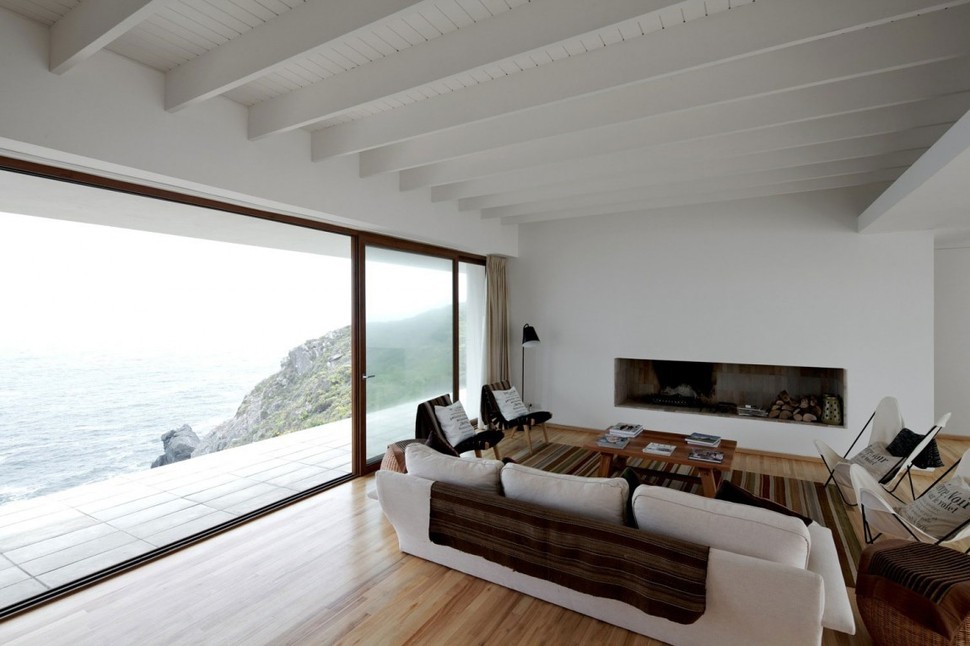
It is a meeting point because it reunites the two night areas of the house, located one to the left and one to the right.
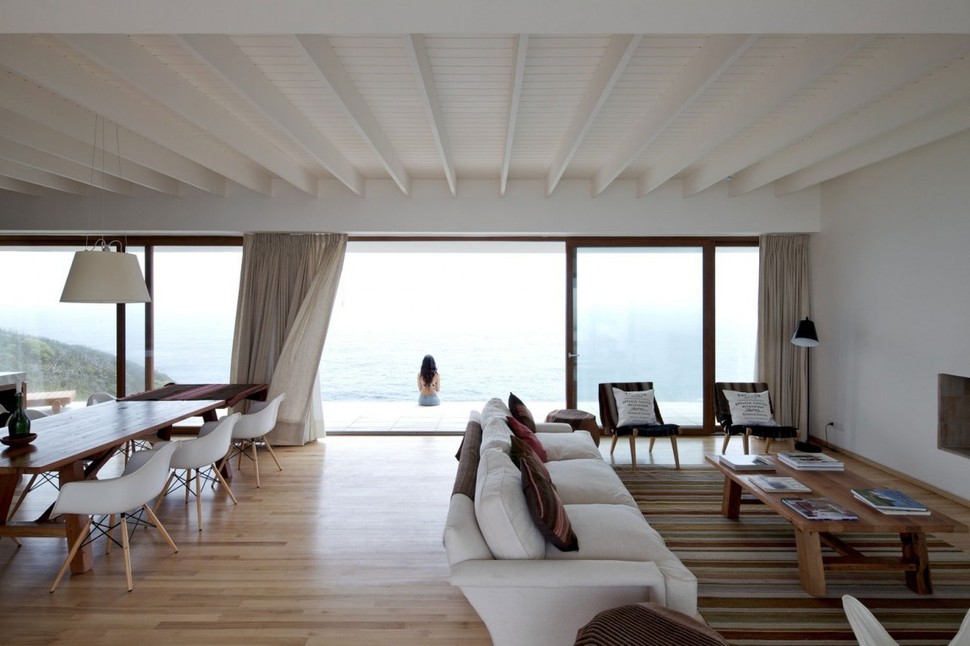
Quite unexpected for a concrete house with a flat roof, the ceiling consists of the wooden beams structure. These beams, painted white, confer warmth and height to the space.
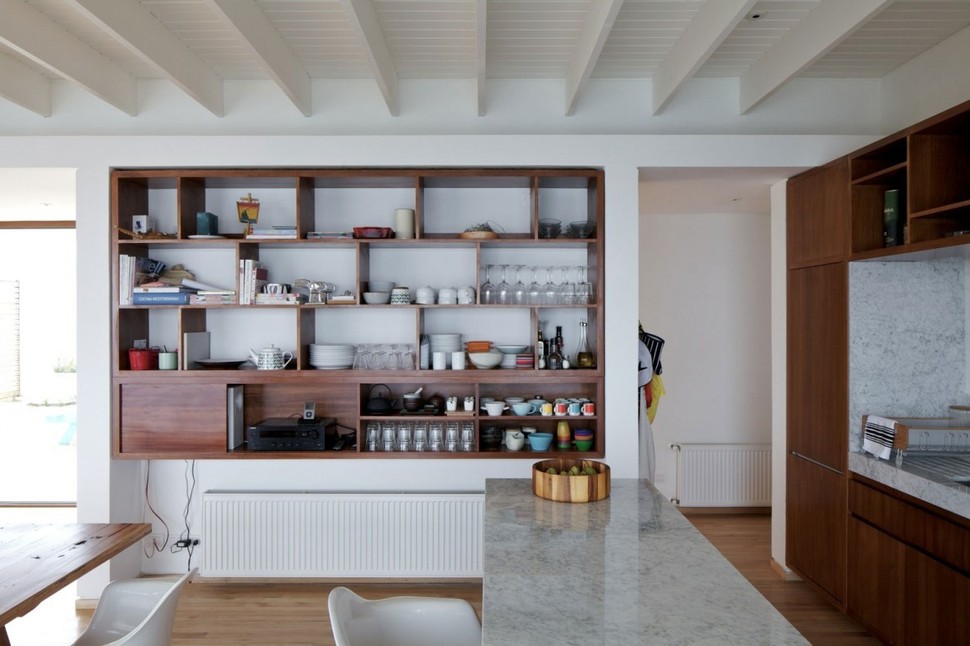
Darker wood, which brings warmth and coziness, is employed in cabinetry and window frames, as well as for the gallery-deck that lines the front side of the house.
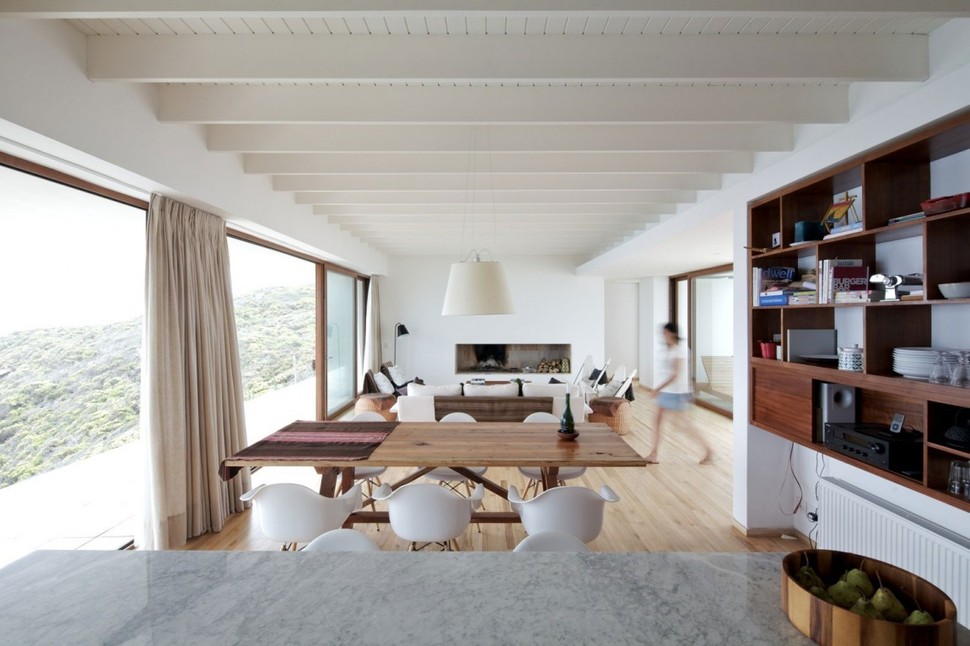

The night area is divided into two parts. The master bedroom with its services is located to one side of the living space, and the children’s and guests’ bedrooms and bathrooms are situated on the opposite site. All spaces ultimately converge to the living room.
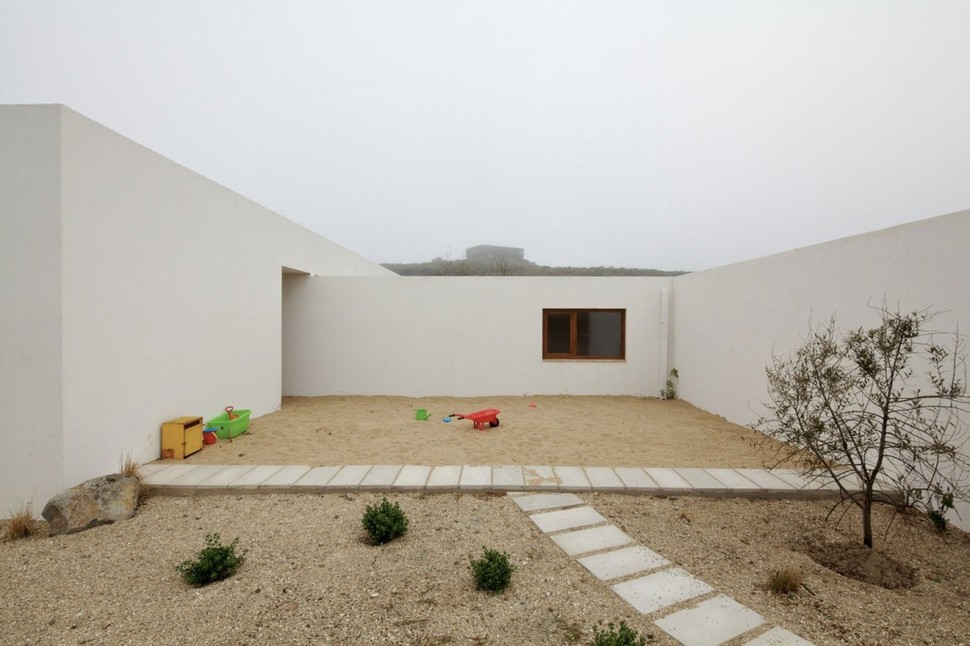
Landscaped with pebbles and very little vegetation, the back yard is enclosed on all sides in order to protect it from the strong winds. This was the best solution for the residents to be able to enjoy outdoor time and the view while being sheltered from rough weather conditions.
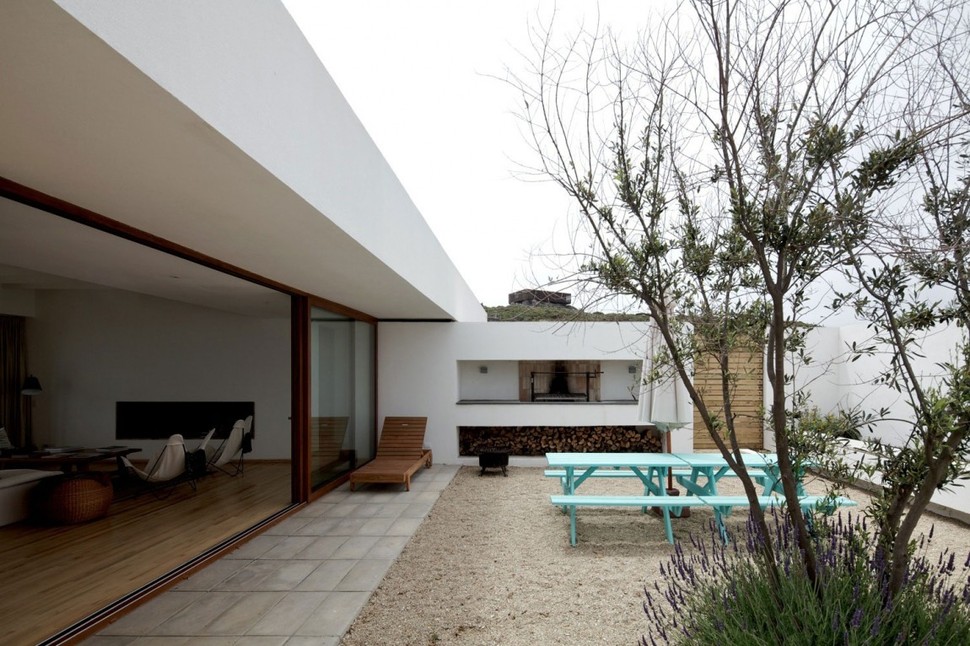
From the wooden dining table with attached benches placed in the back yard, the residents and their guests can admire the view thanks to the transparency of the living area.
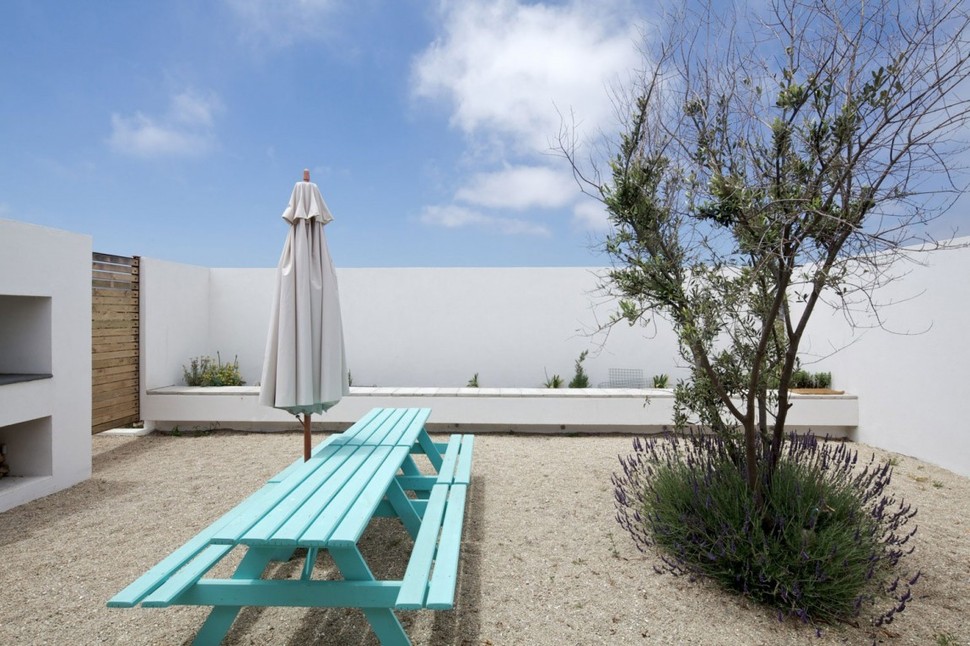
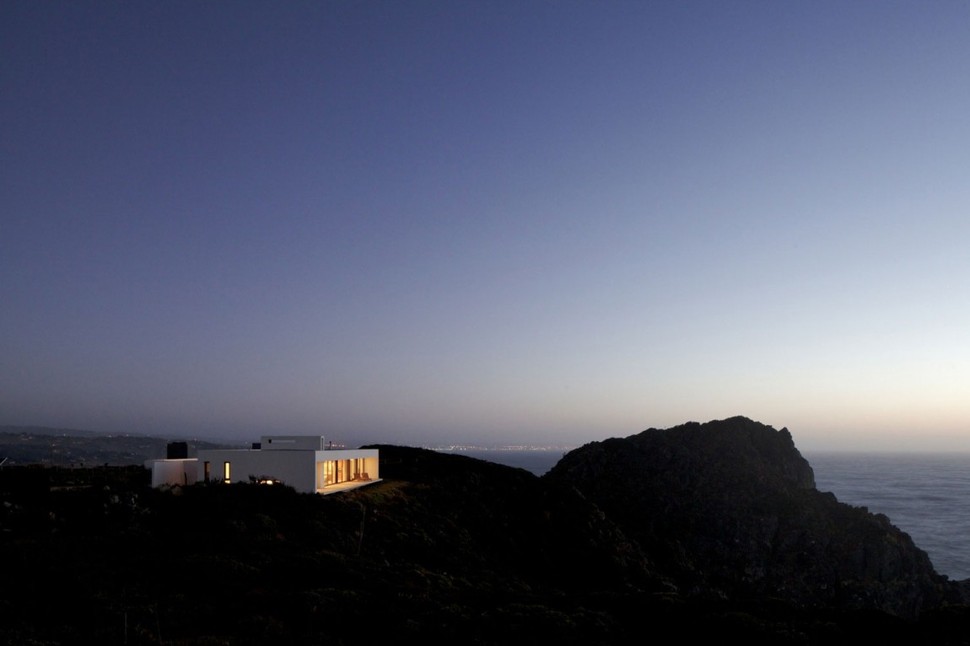
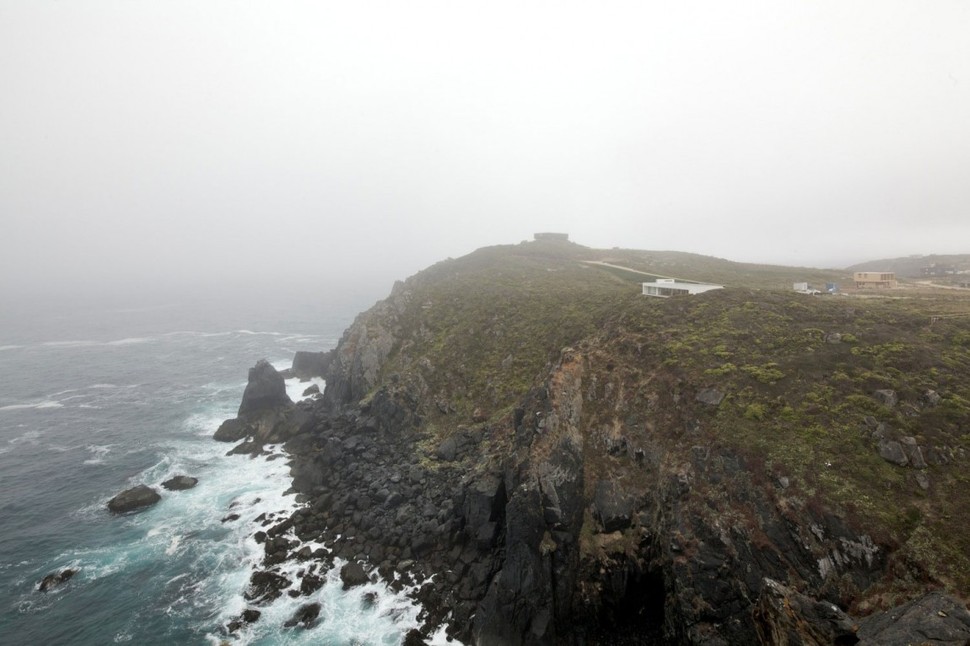
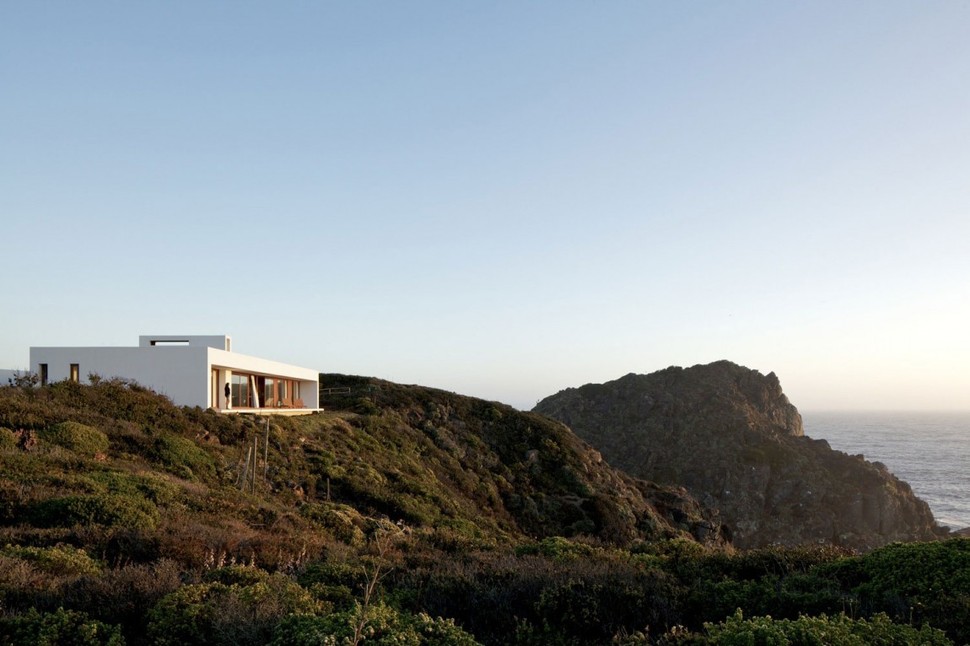
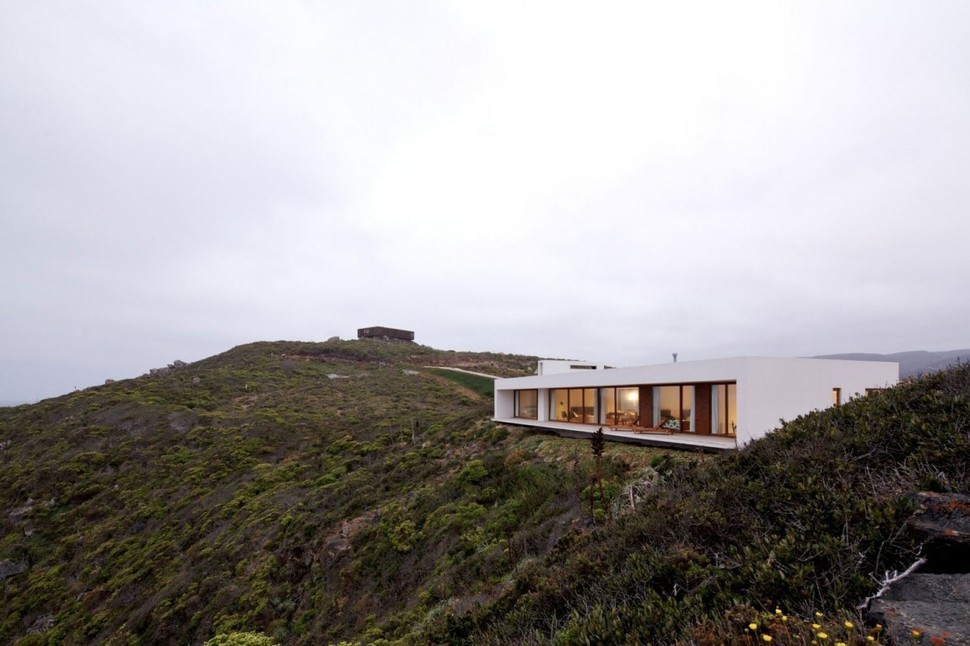
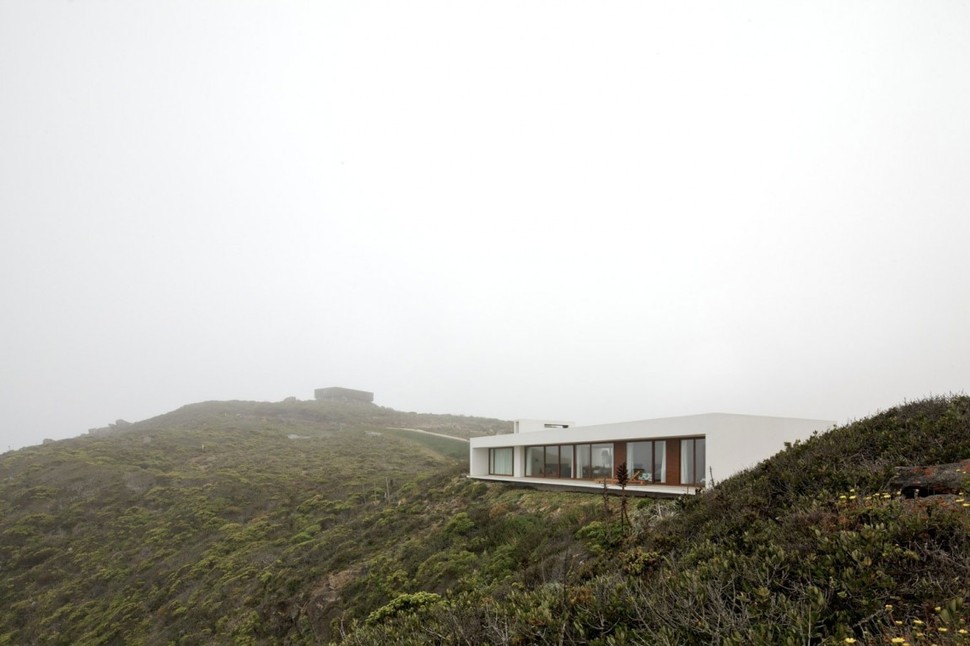
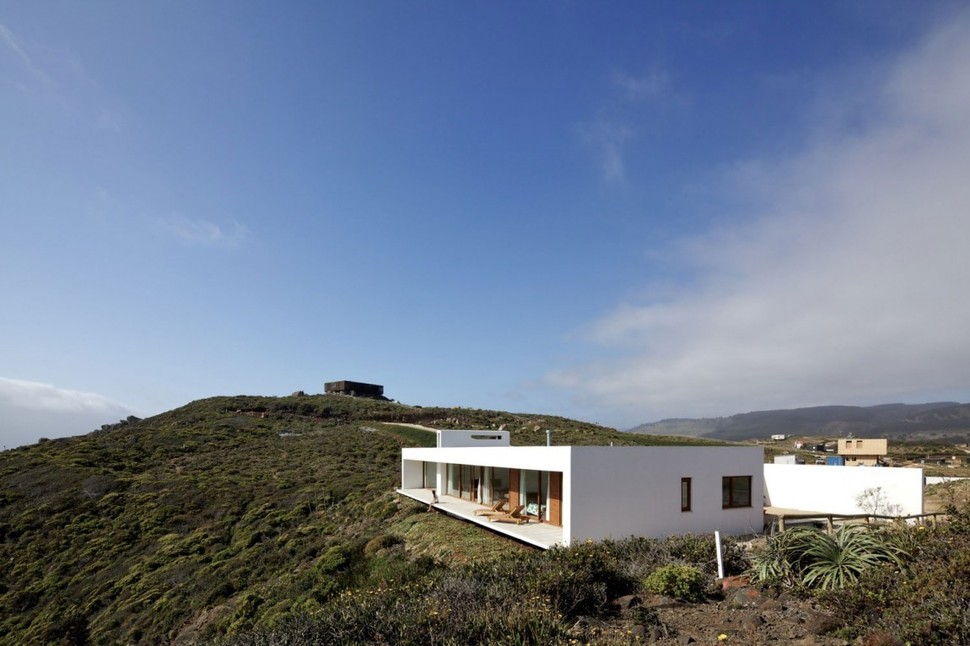


A dirt road leads to the the house and some other houses scattered in this wild coastal area, a sign that man is only a guest and not yet a master of the region.
